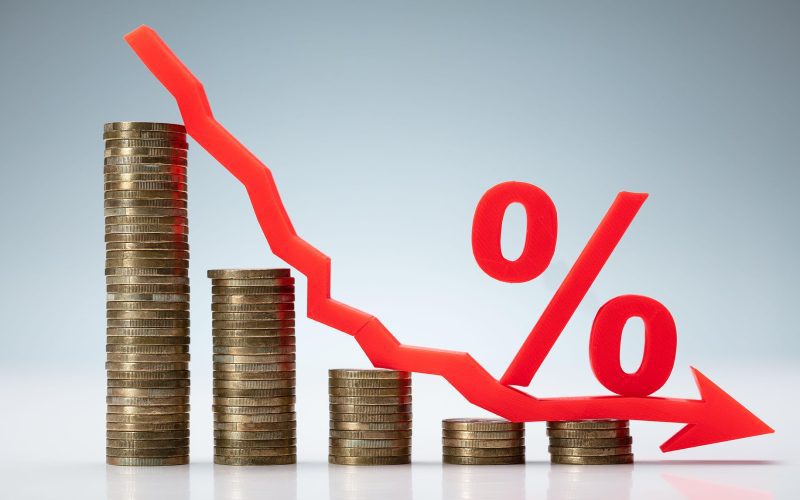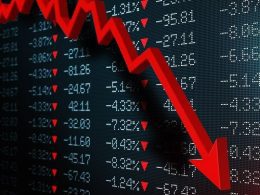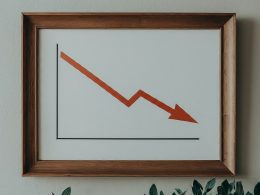Economic uncertainty is a reality that investors must often contend with. In times of financial turbulence, many are left wondering how to protect their investments and even grow their wealth despite fluctuating market conditions. Understanding and implementing effective investment strategies can make a significant difference in weathering economic storms. In this article, we will explore various investment strategies that are essential for individuals looking to secure their financial future during periods of economic instability.
Understanding Economic Uncertainty
Economic uncertainty refers to unpredictable changes in the economy, which can be caused by several factors such as political events, natural disasters, inflation, or global crises (e.g., the COVID-19 pandemic). When the economy is volatile, stock markets can fluctuate, interest rates may rise or fall unexpectedly, and investors may experience heightened risks. However, these periods also present opportunities for strategic investors who know how to navigate the challenges.

The Importance of Strategic Investing
In times of economic uncertainty, a well-thought-out investment strategy is essential for mitigating risks while maximizing potential returns. Successful investors tend to diversify their portfolios, stay informed about market trends, and adopt a long-term perspective. The goal is not to panic but to make calculated decisions that align with personal financial goals.
Key Considerations During Economic Uncertainty:
- Risk Management: Understand the risks involved with different types of investments and how to balance high-risk, high-reward options with safer investments.
- Liquidity Needs: Ensure you have access to cash for immediate needs without having to sell investments at a loss.
- Diversification: Spread your investments across different asset classes to reduce risk.
Top Investment Strategies Amid Economic Uncertainty
1. Diversification Across Asset Classes
Diversification is one of the oldest and most effective investment strategies. By spreading investments across various asset classes—stocks, bonds, real estate, and commodities—investors can mitigate risks and reduce the impact of market volatility on their portfolios. In uncertain times, the performance of one asset class (e.g., bonds) may offset losses in another (e.g., stocks), helping investors maintain a balanced portfolio.
Key Benefits of Diversification:
- Reduces the risk of significant losses
- Provides opportunities for steady returns
- Allows investors to participate in various sectors of the economy
How to Diversify:
- Stocks: Invest in a mix of large-cap, small-cap, international, and emerging market stocks.
- Bonds: Include government bonds, corporate bonds, and municipal bonds.
- Real Estate: Consider real estate investment trusts (REITs) or directly purchasing rental properties.
- Commodities: Hedge against inflation by investing in precious metals like gold, or other commodities like oil or agricultural products.
2. Defensive Stock Investments
During economic uncertainty, it is wise to focus on defensive stocks—those that tend to perform well regardless of market conditions. Defensive stocks typically belong to industries that provide essential goods and services, such as utilities, healthcare, and consumer staples. These companies often maintain stable earnings and pay dividends, making them attractive options for conservative investors.
Key Benefits of Defensive Stocks:
- Lower volatility compared to growth stocks
- Reliable dividend payouts
- Stability during economic downturns
Examples of Defensive Sectors:
- Utilities: Water, electricity, and gas companies
- Healthcare: Pharmaceutical companies, medical devices, and health insurers
- Consumer Staples: Food, beverage, and household goods manufacturers
3. Investing in Precious Metals
Precious metals, particularly gold, have long been considered safe-haven investments during times of economic turmoil. When traditional markets are unstable, investors often turn to gold as it retains its value and even appreciates during crises. Silver, platinum, and palladium are other options, although they tend to be more volatile than gold.
Key Benefits of Precious Metals:
- Hedge against inflation and currency devaluation
- Safe storage of value in uncertain times
- High liquidity and global demand
How to Invest:
- Buy physical gold, silver, or other precious metals
- Invest in ETFs that track the price of precious metals
- Consider mining stocks or mutual funds focused on precious metal companies
4. Dollar-Cost Averaging (DCA)
Dollar-cost averaging is a strategy where investors regularly invest a fixed amount of money, regardless of market conditions. By purchasing assets consistently, investors can average out the purchase price over time, thus reducing the impact of short-term market volatility. DCA is particularly beneficial during periods of uncertainty, as it helps investors avoid emotional decision-making.
Key Benefits of Dollar-Cost Averaging:
- Reduces the risk of mistiming the market
- Disciplined approach to investing
- Smooths out the effects of market volatility over time
How to Implement DCA:
- Set a fixed amount of money to invest monthly or quarterly.
- Choose low-cost index funds, ETFs, or individual stocks.
- Stick to the plan even when the market drops to take advantage of lower prices.
5. Fixed-Income Investments
Fixed-income investments, such as bonds, provide a predictable return and are generally considered safer than stocks. They are particularly appealing in times of economic uncertainty because they offer a steady income stream, regardless of stock market performance. Government bonds, in particular, are regarded as one of the safest investments, as they are backed by the full faith and credit of the issuing government.
Key Benefits of Fixed-Income Investments:
- Stable income through interest payments
- Lower risk compared to equities
- Capital preservation
Types of Fixed-Income Investments:
- Government Bonds: U.S. Treasury bonds, municipal bonds, and other government-backed securities.
- Corporate Bonds: Bonds issued by companies, offering higher yields but also higher risk than government bonds.
- Annuities: Insurance products that provide regular payments over a specified period.
6. Real Estate Investment
Real estate can be a reliable long-term investment, even during uncertain economic times. Investing in income-generating properties, such as rental units or commercial real estate, can provide a stable cash flow and protect against inflation. Additionally, real estate often appreciates over time, making it a solid option for those with a long-term investment horizon.
Key Benefits of Real Estate Investment:
- Tangible asset with intrinsic value
- Potential for rental income and capital appreciation
- Hedge against inflation
Ways to Invest in Real Estate:
- Purchase residential or commercial rental properties.
- Invest in Real Estate Investment Trusts (REITs).
- Explore real estate crowdfunding platforms for fractional ownership opportunities.
Comparative Analysis of Investment Strategies
| Strategy | Risk Level | Liquidity | Potential Return | Ideal for |
|---|---|---|---|---|
| Diversification | Low to Moderate | Moderate to High | Moderate to High | Long-term investors |
| Defensive Stocks | Low to Moderate | Moderate | Low to Moderate | Conservative investors |
| Precious Metals | Low to Moderate | High | Moderate | Hedge against inflation and uncertainty |
| Dollar-Cost Averaging (DCA) | Low to Moderate | Moderate | Moderate to High | Regular, disciplined investors |
| Fixed-Income Investments | Low | Moderate to High | Low to Moderate | Income-focused, risk-averse investors |
| Real Estate | Moderate | Low to Moderate | Moderate to High | Long-term, income-focused investors |
Analysis of Key Strategies
| Strategy | Key Advantages | Drawbacks |
|---|---|---|
| Diversification | Reduces risk, balanced portfolio | May dilute returns in strong markets |
| Defensive Stocks | Stable in downturns, dividend-paying | Limited growth potential |
| Precious Metals | Hedge against inflation, stores value | Can be volatile in short term |
| Dollar-Cost Averaging (DCA) | Reduces emotional investing, disciplined | May miss out on lump-sum investment gains |
| Fixed-Income Investments | Predictable income, lower risk | Limited growth, affected by inflation |
| Real Estate | Tangible asset, rental income potential | Illiquid, requires significant capital |
Conclusion
Investing during times of economic uncertainty requires a careful balance between risk management and potential returns. By diversifying investments, focusing on defensive sectors, and considering safe-haven assets like precious metals, investors can protect their portfolios and even find growth opportunities. Strategies like dollar-cost averaging and fixed-income investments provide stability and long-term security. Real estate also remains a viable option for those with a long-term horizon.
The key to success lies in staying informed, remaining disciplined, and being adaptable to changing market conditions. Implementing these strategies can help investors navigate economic uncertainty and achieve their financial goals.












